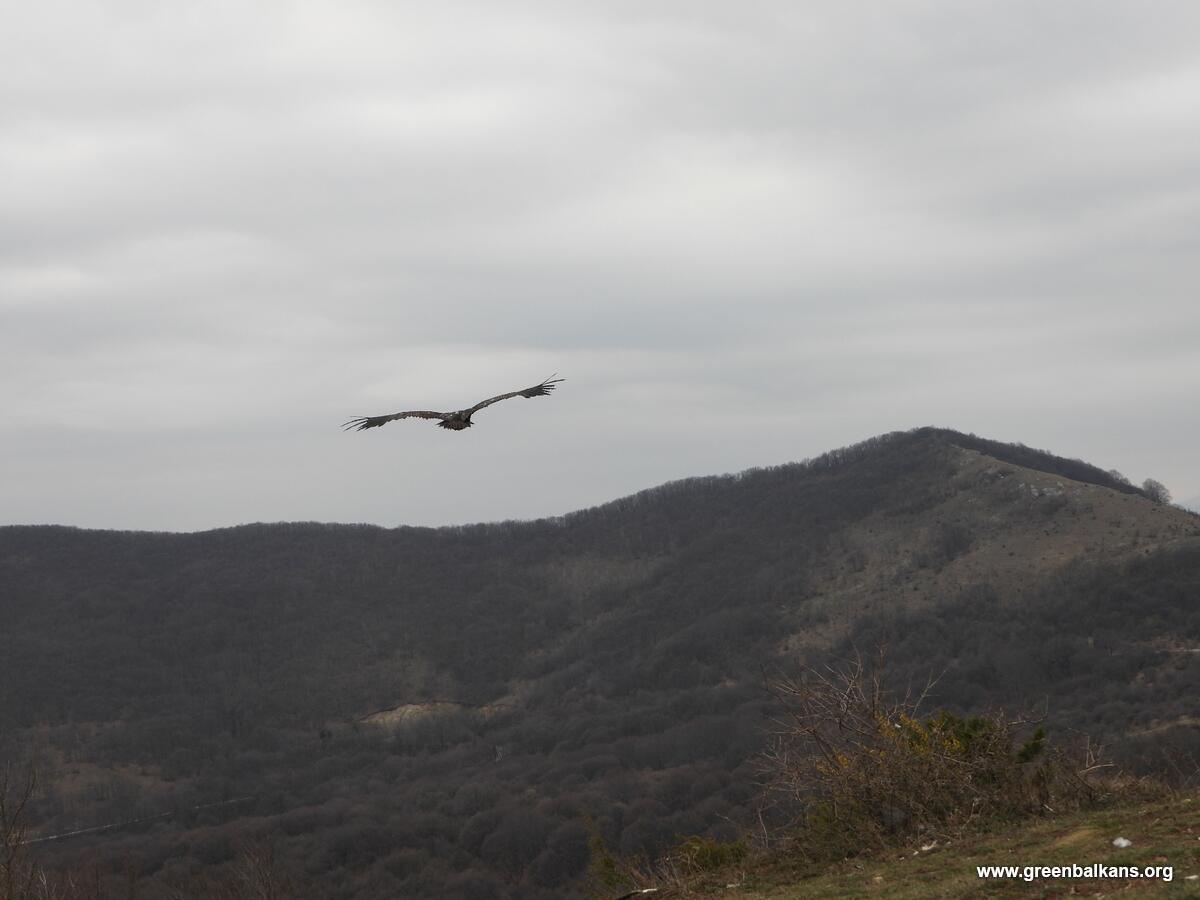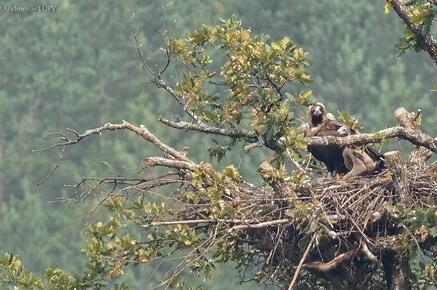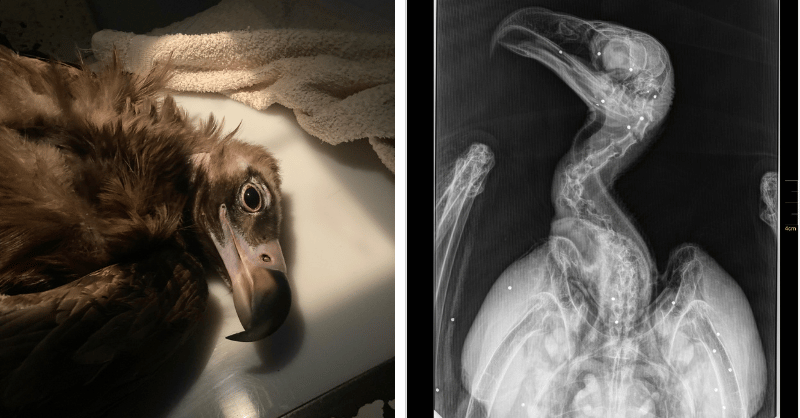
The first ever Cinereous Vulture pair formed in Bulgaria since the extinction of the species in the country. Both vultures that are part of the pair were reintroduced within the Vultures Back to LIFE project that aims to bring the species back to the country and establish a breeding population.
Balkan and VCF Know-How
As well as releasing captive-bred birds, the Vultures Back to LIFE project is also releasing adult birds that the VCF transferred from rescue and rehabilitation centres in Spain. In 2018, 12 vultures came from Spain and in 2019, year ten more! The male Balkan and female VCF Know-How came from Spain and are the first two Cinereous Vulture ‘lovebirds’ in Bulgaria. Although Balkan had competition with Zlosten, another released bird who was pretending to pair with VCF Know-How, in the end, it seems that Balkan won over VCF Know-How and together they formed the first pair.
Exhibiting Breeding Behaviour

The Vultures Back To LIFE team is continually observing the Cinereous Vultures released and closely monitored the first breeding signs of the new pair since last fall. Their relationship gradually evolved, and with the breeding season currently underway, their breeding behaviour becomes more and more prominent. So far, the behaviour observed includes, ‘kisses’ between the two, courtship flights, staying close to each other, especially overnight during roosting. The vultures also provide “presents” to each other like bones and sticks. Currently, the couple undertakes daily wanderings between Sliven and Kotel, and also travels to the Central Balkans, possibly looking for a nesting place. The team will continue to monitor the pair, and we will keep you updated.
Cinereous Vultures in Bulgaria
The Cinereous Vulture was found everywhere in Bulgaria during the 19th and the beginning of the 20th century. But due to habitat loss, the widespread use of poisons to combat terrestrial predators, agricultural intensification, lack of food resources, and deliberate shooting of individuals, the species was driven to extinction. The last proven breeding pair nest was recorded in 1993 in the Cold Well area, during an expedition by Green Balkans experts. The only natural colony of the Balkans species is located in the Dadia National Park, Greece, where often single birds were observed visiting vulture feeding sites in the Eastern Rhodopes, reaching both the Balkan Mountains and the Kresna Gorge. In 2015, the Vultures Back To LIFE project was launched to bring the species back to the country.
Vultures Back To LIFE

Led by the wildlife conservation charity Green Balkans, with activities also implemented by the Fund for Wild Flora and Fauna, and bringing together partners from Bulgaria, Spain and Germany, Vultures Back to LIFE aims to reintroduce the cinereous or Eurasian black vulture to Bulgaria. The team will transfer and release around 60 birds, some from captive-breeding, but mostly coming from wildlife rehabilitation centers in Extremadura (Spain) into the wild in Bulgaria as well as creating supplementary feeding stations and improving populations of wild herbivores, improving the nesting conditions and creating artificial nest sites and tackling some of the major threats to vultures in the country such as insulating electricity pylons and illegal use of poison in the nature.




